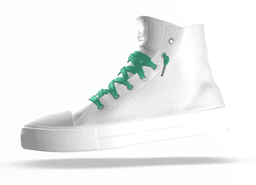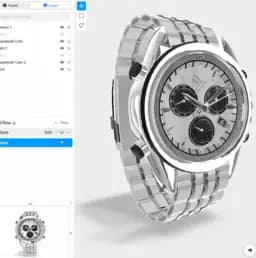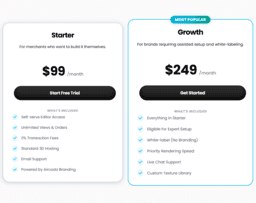In-Depth Analysis: 8th Wall vs Adobe Aero
If you’re aiming for immersive, developer-centric AR experiences, choose 8th Wall, versatile with its advanced features, WebAR technology, and higher pricing. However, if you need an intuitive, no-code AR creation tool, specifically for iOS, with Adobe Creative Cloud compatibility, opt for Adobe Aero.

Key Differences Between 8th Wall and Adobe Aero
- Coding: 8th Wall requires understanding of web technologies like JavaScript, WebGL, HTML5. Adobe Aero doesn’t need coding.
- Platform: 8th Wall operates on WebAR for most devices, Aero is iOS specific.
- Pricing: 8th Wall has a higher cost exceeding 2000 USD per month, Aero pricing is part of the Adobe Creative Cloud subscription.
- Integration: 8th Wall supports integration with WebAR and WebVR development, Aero is best paired with Adobe Creative Cloud suite.
- Advanced Features: 8th Wall supports AR QR Code experiences, SLAM Engine, hand & iris tracking; Aero provides interactive experiences, behavioral content triggers.
| Comparison | 8th Wall | Adobe Aero |
|---|---|---|
| Mission | Make augmented reality accessible to everyone through WebAR | AR creation with easy-to-use tools and integrations with Adobe Creative Cloud |
| Accessible on | iOS, Android, AR/VR headsets | iOS devices |
| Primary Tools | 8th Wall AR Engine, Cloud Editor | Integration with Adobe Creative Cloud apps |
| Key Features | 6-DoF Tracking, Lighting and Surface Estimation, Image Target Tracking, Face Effects | Interactive experiences, Asset placement/rotation, Content triggers, Motion paths |
| WebAR Enhancements | Hand Tracking, Sky Effects, AR Code | Faster loading experiences through App Clips |
| Compatibility with High-end Devices | Relies on webAR technology | Supports iOS 16+ |
| Intuitive for Non-Developers | Requires understanding web technologies such as JavaScript, WebGL, HTML5 | No coding or 3D design needed |
What Is 8th Wall and Who’s It For?
Founded in Palo Alto, 8th Wall takes augmented reality to the masses through its award-winning AR developer platform. From startups to top-tier brands, developers utilizing WebAR can add depth to user experiences—no app needed. What puts 8th Wall on the map is its cloud-based integrated environment for WebAR and WebVR development, which aids developers from inception to distribution and discovery of WebAR content.
Interestingly, 8th Wall’s technology extends its capabilities to include ‘Human AR’. For brands or developers looking to employ the next level of interactive experience via augmented reality, 8th Wall is a worthy contender.
![]()
Pros of 8th Wall
- Wide accessibility: Can be accessed on any smartphone
- Full-stack development environment with Cloud Editor
- Advanced capabilities: 6-DoF Tracking, Lighting and Surface Estimation, Image Target Tracking
Cons of 8th Wall
- Mandates technical knowledge: Developers must understand technologies like JavaScript, WebGL, HTML5
- Higher cost for commercial license, exceeding 2000 USD/month
What Is Adobe Aero and Who’s It For?
Adobe Aero serves as a creative tool for AR development—without the need for coding or 3D design prowess. Remarkably, it is ideal for content creators, educators and marketers who wish to leverage the power of augmented reality without diving deep into technicalities. As it stands, Adobe Aero’s chief strength is its seamless integration with existing Adobe Creative Cloud applications.
The platform is currently available in iOS devices, with plans to extend support to Android devices in the future. Despite minor potential limitations and bugs, Adobe Aero is hailed as an enabler of creativity, simplifying the creation process of AR experiences.

Pros of Adobe Aero
- Simplifies AR development process, no coding required
- Excellent integration with Adobe Creative Cloud applications, streamlining workflows
- An easy-to-master interface, ideal for non-tech users
Cons of Adobe Aero
- Only supports iOS devices currently
- Lacks advanced features compared to other platforms
- Known issues: Fail-to-open projects
8th Wall vs Adobe Aero: Pricing
While 8th Wall offers a more developer-focused toolset with pricing that exceeds 2000 USD per month, Adobe Aero simplifies AR development with an easier to master interface, pricing details of which are unavailable.
8th Wall
8th Wall has set its sights high, seeking to make augmented reality ubiquitous, accessible, and overwhelmingly useful across a range of sectors. Its pricing – reported to be north of 2000 USD per month – undeniably sets a significant threshold for entry. Considering however, the wealth of developer tools, the power of its computer vision technology, the sophisticated AR Code feature, and the fact that it hosts over 2000 commercial experiences, the platform provides compelling value for those willing to scale the cost.
Adobe Aero
Adobe Aero stands as a gateway into the world of AR creation, especially for those more design-focused or less coding-inclined. It comes armed with a simplified interface and a slew of features including asset placement, rotation, scale, and preview mode. In terms of pricing, no explicit information is available. Limitations to the platform do exist such as its iOS only compatibility and some reported bugs. Despite these, user experience appreciation is generally high. Its integration with Adobe Creative Cloud suite further enhances workflows, arguably providing adequate lure for potential users to leap over any pricing hurdles, details of which are currently undisclosed.
Final Showdown – 8th Wall or Adobe Aero?
As pro-grade creators and tech enthusiasts, the ultimate question resides: Which reigns supreme – 8th Wall or Adobe Aero? Let’s break that down for different audience segments.
The Educated Elite
If you’re rooted deep in the world of web technologies like JavaScript, WebGL, HTML5 and are driven by the dream of creating intricate, interactive AR experiences with no device constraints, the 8th Wall should be your go-to choice. Know it: with robust tools like the AR Engine, Cloud Editor and ambitious features under its hood, 8th Wall is capable of far more than just web-based augmented reality. It’s a whole new paradigm.

The Creative Catalyst
Adobe Aero caters elegantly to the array of creatives seeking to bring their visions to life in AR, without the burden of mastering code. If you’re an illustrator, designer, or a marketer and Adobe Creative Cloud is your arena, then Aero’s seamless integration with this suite will boost your workflow, translating your 2D experiences into the 3D space in a breeze.

The Fast-paced Innovator
8th Wall’s robust and cutting-edge features like its Lightship VPS, Image Target Tracking and WebAR capabilities, speak a tantalizing language of power and possibilities to those with an appetite for leading-edge tech and constant innovation. Well, if you’re the kind of innovator who thrives on fast-paced advancements and keeping ahead of tech curve, 8th Wall exhibits a matchless prowess.

In the tussle between 8th Wall vs Adobe Aero, it’s not about superiority, it’s about alignment. For code-warriors, tech trailblazers and innovators 8th Wall brings unparalleled versatility. For artists, designers, and Adobe-bound creators, Aero stands as an intuitive gateway to AR-exploration. There’s your key: Invest where your skills thrive.







